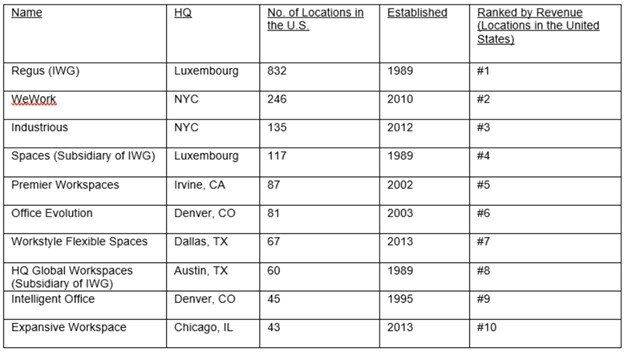Coworking in Modern Business: Evolving Trend or Here to Stay
By Cameron Foster, Associate Broker, The Boulos Company
Merriam-Webster defines coworking as the practice of working within a shared building, where multiple tenants rent working spaces such as desks or offices and enjoy access to communal facilities. According to Google, the first coworking space started in 1995 in Berlin, Germany. It was called “C Base” and was primarily used by hackers. The goal was to share space and knowledge to work on coding projects. In the United States coworking first started in August of 2005 when Brad Neuberg set up the first-ever coworking space in San Francisco, known as the “Spiral Muse.”
Since then, the trend has grown, along with the internet boom, cellular communication, and the connectedness of modern global businesses. The ability to increase staff, revenue, and global presence without purchasing real estate or committing to a long-term lease has been a huge win for some businesses. This, coupled with 21st-century technological advancements, the ever-inventive entrepreneurial spirit, and customers demanding more, has led to an interesting industry story.
The business idea came from a problem. The founders of these companies saw a need in the marketplace for “shared space” as small companies grew, launched their businesses, and started to hire. The goal was to create an option between working out of an entrepreneur’s basement and signing a multi-year commercial lease with a landlord. The use of coworking is also beneficial for businesses that are slowing down their operations. As a sole proprietor, you can rent a desk or an office to maintain a professional address at a coworking space, keep your business running, and maintain flexibility. Coworking can offer limitless advantages for early-stage and end-stage companies. Coexisting with other businesses can create an incubator of ideas and can also be a great networking opportunity, growing the professional and personal relationships of the business owner.
When it comes to catching the wave— or seismic shift—in how people work, this is a developing story. The Pandemic caught everyone off guard and spurred more companies to adopt work-from-home or hybrid models. Naturally, this creates a tougher road ahead for coworking businesses. WeWork was hit the hardest. Post-pandemic the company has shut down forty (40) locations.
In 2022, the Real Deal named the top ten coworking operators in the United States. All ten companies were established within the last thirty years, and they all share the same model: providing shared office space services for workers and companies looking for ready-to-operate space with low commitments in prominent locations.
https://therealdeal.com/new-york/2022/12/30/the-10-largest-co-working-operators-of-2022/

The office market is currently caught between companies that would like to return to the workplace and a tight labor market. If employees would rather work from home, and small businesses can continue to effectively scale, hire, train, and grow in revenue remotely, this will exacerbate the issue for coworking companies.
So, fad or future? I think coworking is here to stay as it serves a vital need for growing businesses and folks at the end of their business cycles looking for space to slow down operations. Much of the story is yet to be told.
If you are a tenant or a landlord and you have a question about whether coworking makes sense for your strategic real estate plan, please contact us at The Boulos Company.
Article originally published on October 31, 2023, https://boulos.com/coworking-space-in-modern-business-from-hackers-hub-to-business-necessity-is-it-a-fad-or-the-future/?mc_cid=ef0a973a8e&mc_eid=87a9b15008
